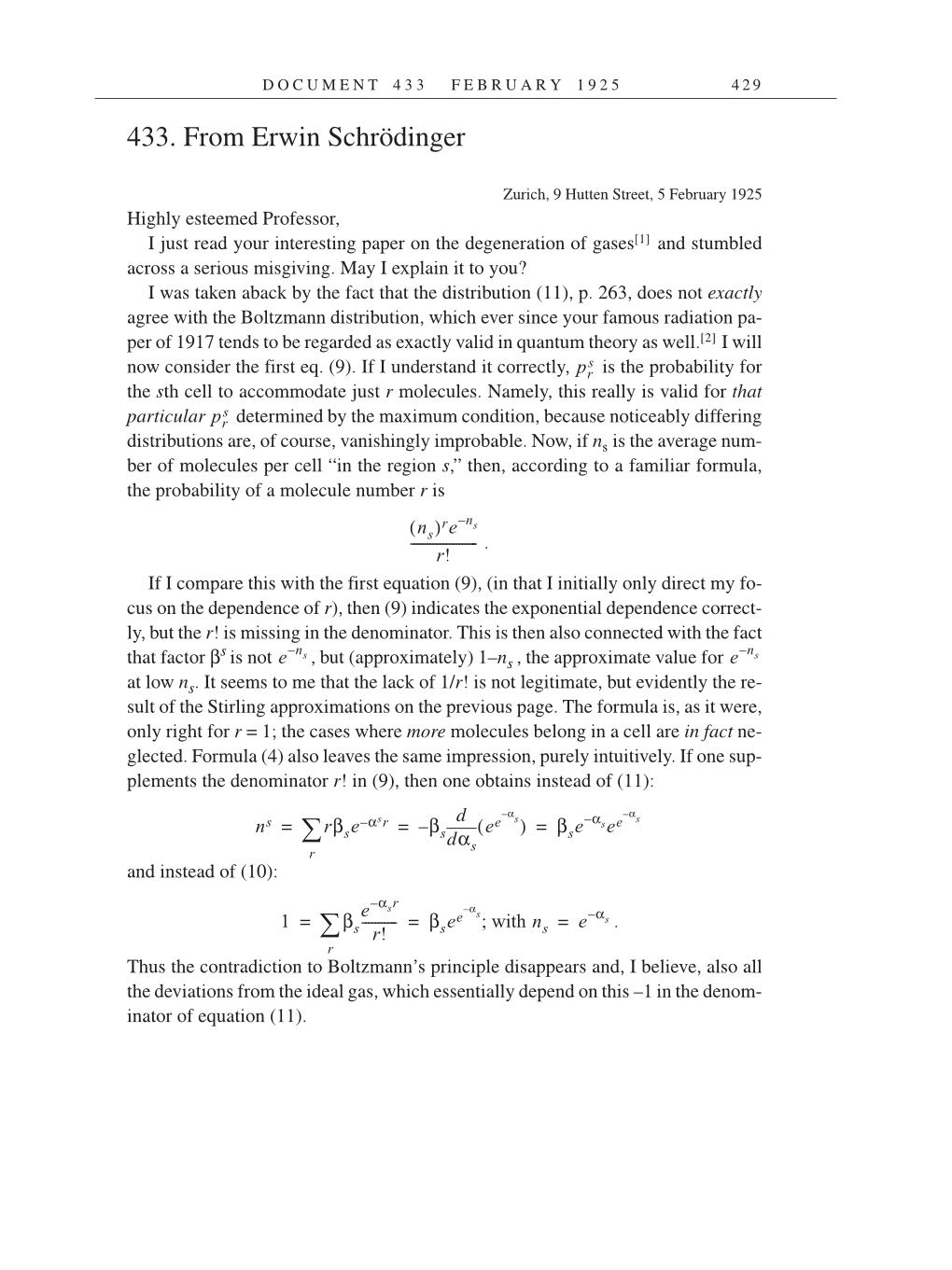D O C U M E N T 4 3 3 F E B R U A R Y 1 9 2 5 4 2 9
433. From Erwin Schrödinger
Zurich, 9 Hutten Street, 5 February 1925
Highly esteemed Professor,
I just read your interesting paper on the degeneration of
gases[1]
and stumbled
across a serious misgiving. May I explain it to you?
I was taken aback by the fact that the distribution (11), p. 263, does not exactly
agree with the Boltzmann distribution, which ever since your famous radiation pa-
per of 1917 tends to be regarded as exactly valid in quantum theory as
well.[2]
I will
now consider the first eq. (9). If I understand it correctly, is the probability for
the sth cell to accommodate just r molecules. Namely, this really is valid for that
particular determined by the maximum condition, because noticeably differing
distributions are, of course, vanishingly improbable. Now, if ns is the average num-
ber of molecules per cell “in the region s,” then, according to a familiar formula,
the probability of a molecule number r is
.
If I compare this with the first equation (9), (in that I initially only direct my fo-
cus on the dependence of r), then (9) indicates the exponential dependence correct-
ly, but the r! is missing in the denominator. This is then also connected with the fact
that factor
βs
is not , but (approximately) 1–ns , the approximate value for
at low ns. It seems to me that the lack of 1/r! is not legitimate, but evidently the re-
sult of the Stirling approximations on the previous page. The formula is, as it were,
only right for r = 1; the cases where more molecules belong in a cell are in fact ne-
glected. Formula (4) also leaves the same impression, purely intuitively. If one sup-
plements the denominator r! in (9), then one obtains instead of (11):
and instead of (10):
.
Thus the contradiction to Boltzmann’s principle disappears and, I believe, also all
the deviations from the ideal gas, which essentially depend on this –1 in the denom-
inator of equation (11).
pr s
pr s
ns)re–n-
(
s
r!
--------------------
e–ns e–ns
ns r
r
¦rβse–αs
d
ee
–αs)
–βsdαs(
βse–αsee–αs
= = =
1
e–αsr
r!
-----------
r
¦βs
βsee
–αs;
with ns
e–αs
= = =
